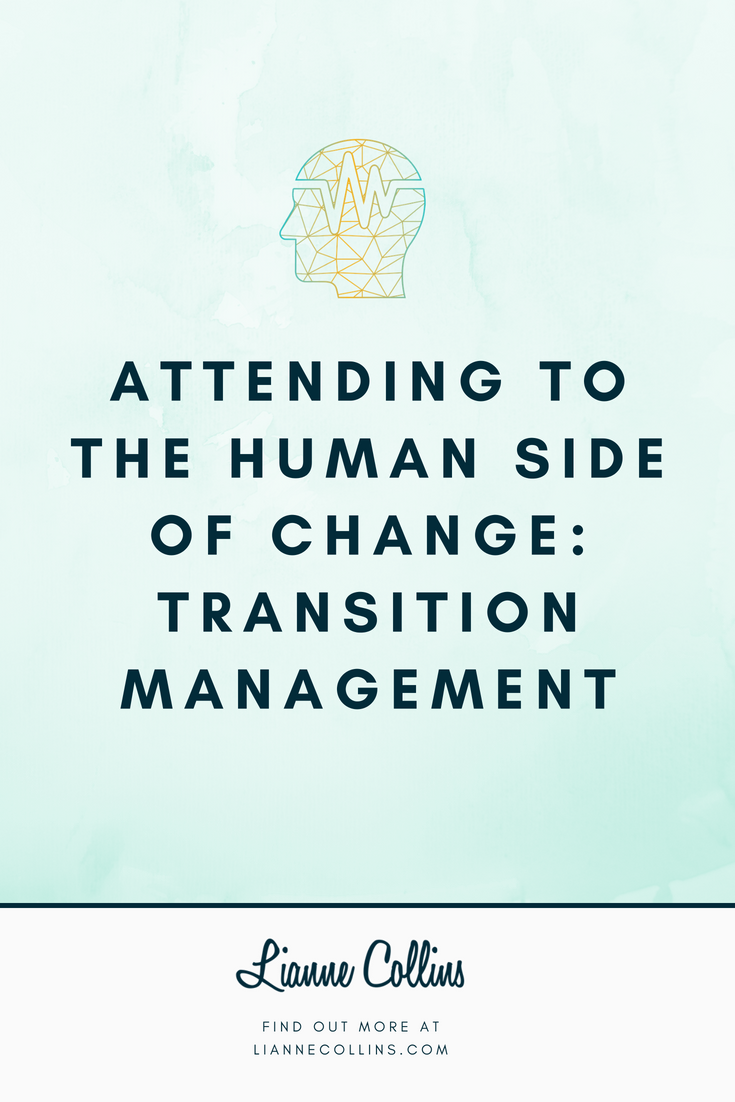Attending to the Human Side of Change: Transition Management
“It isn’t the changes that do you in, it’s the transitions.”
- Dr. William Bridges
Successful, sustainable change and improvements that lead to break through results require attention to both change and transition. Dr. William Bridges, a thought leader in organizational and personal change, clearly differentiated between change and transition.
Bridges defined change as external and situational – the reorganization, the merger, the leadership change, the new business model, the new work process or practice, the adoption of a new technology.
He defined transition as internal and psychological; the 3-phase process that people go through as they internalize and come to terms with all the details and requirements of the new situation that change brings about. Each of the three phases in his transition model (the Ending, the Neutral Zone and the New Beginning) is characterized by specific feelings, core needs and emotionally charged behaviours.
Getting people through transition is essential for any change or improvement to be successful. Bridges not only mapped the transition process he outlined key leadership tasks and responsibilities for each phase. There is no magic way to achieve pain-free transition but transition can be managed and leaders play a critical role in making them manageable.
In the new world of work, change is non-stop and transitions are accelerated and overlapping. Learning to manage the transition experience (your own and other peoples) is an important skill to acquire, improve and master.
Social and Cognitive Neuroscience are offering a new lens to view transition – the intense feelings and emotionally charged reactions people experience as they unplug from the old world and plug into the new world of work.
Brain savvy change leaders understand:
How the brain perceives the losses, uncertainty and risk taking inherent in the transition experience
What optimizes and what diminishes brain power in individuals and teams
How to keep the brain strong to deal efficiently and effectively with demanding situations, disruption and the transition process
Brain-based approaches to transition management
Brain savvy change leaders can apply their understanding of the brain in transition to realistically assess: potential impacts to people and performance; the team's levels of change readiness and capacity; the team’s learning requirements and the level of resource and support necessary to minimize negative impacts and resistance.
Brain savvy change leaders can develop practical transition management plans to help people deal effectively with their endings and losses, navigate the uncertainty and flux of the Neutral Zone and learn the mindsets and behaviours associated with the New Beginning.
Brain savvy change leaders can develop strategies for creating and sustaining” brain friendly” workplace environments that support better thinking, better problem solving, better decisions and higher levels of resiliency and performance throughout all the phases of transition.
I help leaders leverage insights from neuroscience and apply evidence based tools and practices to lead non-stop change and manage continuous and overlapping transitions in the new world of work.








